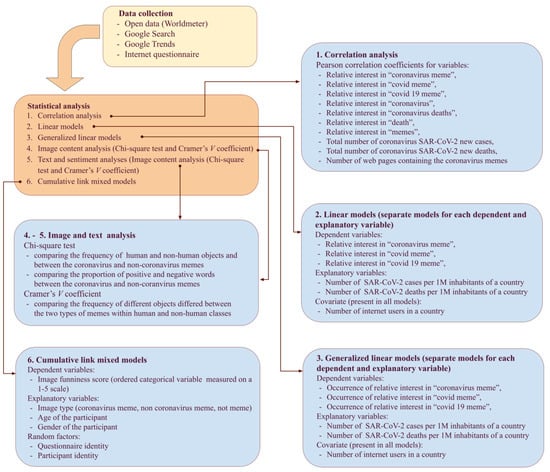Are blockchain networks truly as interconnected as they aim to be? Is there a gap between different blockchain platforms that is obstructing the flow of information, and how does this impact industries utilizing these innovative technologies? These are pivotal questions we need to ask as we delve into the complex world of blockchain interoperability.
The issue at hand is the lack of interoperability between various blockchain networks. According to a study by McKinsey & Company, many blockchain networks are not designed to communicate and interoperate with each other, creating a fragmented system. The World Economic Forum also underscores this problem, stating that the absence of interoperability can limit the potential of blockchain technologies. The proposal to mitigate this issue, particularly in the U.S., is to foster collaborations among companies and make concerted efforts to bridge gaps between different blockchain networks.
In this article, You will learn about the various strategies businesses are employing to tackle blockchain interoperability. The focus will be on innovative approaches, including cutting-edge technological solutions and high-level partnerships, aiming to bring disparate blockchain networks closer. In addition to detailing these efforts, the article will draw insights from industry experts predicting the future of interoperability.
This article will also spotlight some key companies leading this initiative. By understanding their techniques and approaches, you can gain a comprehensive understanding of the effective and practical methodologies employed to bring blockchain interoperability to fruition.

Definitions: Understanding Blockchain Interoperability and Bridging Networks
Blockchain is a type of database or digital ledger that records transactions across numerous computers in a network.
Blockchain Interoperability refers to the ability of different blockchain systems to share information and interact with each other smoothly.
Bridging the Gap in this context implies creating connections or ‘bridges’ between different blockchain networks to allow them to communicate effectively.
Blockchain Networks simply refers to networks of computers or nodes maintaining a blockchain.
Understanding these definitions is crucial to grasp the concept of blockchain interoperability and how companies are working towards bridging the gap between different blockchain networks.
Unmasking the Heroes: Innovative Companies that are Redefining Blockchain Interoperability
Redefining the Landscape: Blockchain Interoperability Pioneers
At the genesis of blockchain technology, various networks were established, each operating in isolation from each other. However, these clandestine islands of blockchain networks had an inherent challenge: a lack of efficient communication and transaction capabilities between blockchain platforms. Enter blockchain interoperability, an innovative concept that seeks to bridge the divide among isolated blockchain ecosystems. In the wake of this new tech development, several corporate juggernauts have emerged, pioneering its application to enhance scalability, inclusion and seamless operations.
Among the forerunners are companies like Cosmos, Polkadot and Chainlink. For instance, Cosmos, aptly dubbed the “Internet of Blockchains,” provides a platform for seamless connection between multiple blockchains to allow efficient information and value exchange. On the other hand, Polkadot utilizes its unique multichain technology to permit isolated blockchains to share information and transactions, thus breaking down the interoperability barrier. Meanwhile, Chainlink aims to link smart contracts with real-world data, hence addressing the oracle problem by ensuring that blockchain networks can safely interact with off-chain data and APIs.
Unveiling their Strategies to Widen the Scope of Blockchain Technology
These interoperability champions are achieving landmark success through their distinct methodologies. These corporations are employing strategies that include; creating protocols that facilitate smooth information exchange, democratizing data access and use, and fostering inclusivity in the blockchain ecosystem.
- Creating protocols: Companies like Polkadot and Cosmos are creating efficient protocols that encourage information and value transfer between different blockchains. This is facilitating interoperability, something that was not feasible before their intervention.
- Democratizing data: Chainlink, through its decentralized oracle network, democratizes the access and use of off-chain data. This allows diversely located entities to interact with the same set of data despite operating on different blockchains.
- Fostering inclusivity: Paramount in their agendas is the aspect of inclusivity. These companies aim to obliterate the existing silos by enabling any blockchain – regardless of its functionality, to interconnect with others. This inclusivity is encouraging the mainstream adoption of blockchain technology.
The wave of blockchain interoperability is reshaping the future of this groundbreaking technology. These innovating enterprises are pioneering this promising revolution, their impressive strides demonstrating the immense potential of interoperability. And while the path to a fully interconnected blockchain world might be laden with challenges, one thing is clear: blockchain interoperability is not just the future of blockchain—it’s the now.
Sailing the Rough Seas: The Journey and Challenges in Attaining Blockchain Interoperability
Challenges in Blockchain Integration
Is it possible to blend the versatility of diverse blockchain platforms into one functional application? The current technological landscape poses hurdles that make blockchain integration somewhat complex. One of the main problems is the lack of standardization across different blockchain networks. This results in a disjointed ecosystem with separate platforms operating with their own unique sets of rules and regulations. It makes communication or inter-operation between these platforms quite difficult, creating islands of isolated networks that cannot effectively interact with each other. Additionally, a major constraint comes in the form of throughput and latency issues, which can significantly hinder the successful merger of disparate blockchain networks.
Fragmented Environment Hindrance
The complexity of the blockchain environment, characterized by a fragmented landscape, can also upend interoperability efforts. Currently, each blockchain network uses unique protocols and consensus algorithms, making it challenging to have a seamless flow of communication between them. The diverse transaction speeds, consensus mechanisms, and block validation processes add another layer of intricacy. Furthermore, every blockchain network aims to provide data immutability and enhanced security, which while adding merit to each individual system, creates significant interoperability complexities due to differing security mechanisms and data structures. The exciting technological developments in the blockchain industry are, ironically, also contributing to the problems of integration and interoperability.
Bridge Builders: Case Studies of Interoperability
Despite these challenges, several companies stand at the forefront of addressing this issue. A notable example is Cosmos Network, which utilizes a hub-and-spoke model to connect different blockchains. Through this model, individual blockchains (the ‘spokes’) interact with the Cosmos hub, enabling the transfer of assets and data between networks. Another organization, Polkadot, is making strides by providing a platform where multiple blockchains can co-exist and interoperate on a shared security model. With its Relay Chain functioning as the central communication line, Polkadot not only provides a way for different blockchains to communicate but also ensures enhanced security. Meanwhile, Interledger, developed by Ripple, uses a protocol suite for sending payments across different ledgers. Like routers on the internet, connectors route packets of money across independent networks. These companies offer proof that achieving blockchain interoperability, while admittedly complex, is possible and pivotal in maximizing blockchain technology’s value and full potential.
Redefining Boundaries: How Blockchain Interoperability is Transforming the Tech Industry Landscape
Challenging the Status Quo: Blockchain Interoperability
What if the world of technological innovation emerged from its siloed existence to embrace a more collaborative future? Blockchain Interoperability, the sharing and exchange of information between different blockchain networks and systems, is chipping away at the existing monolithic structure of the tech landscape. With it, innovation is no longer confined to individual networks, leading to not just unprecedented levels of creativity, but also significant efficiency gains. Rather than creating new solutions from scratch, blockchain interoperability allows for the utilization and improvement of existing technologies, maximizing value creation.
Addressing the Dilemma: Can Blockchains Communicate?
At present, the most significant challenge experienced within this paradigm shift is the inability of distinct blockchains to communicate with each other. Currently, multiple blockchain networks operate independently, with their set of protocols, standards, and consensus models. The inability to have a standardized means of communication has led to isolated information units- often referred to as “blockchain islands” – a hurdle that mitigates the effectiveness of these decentralized networks. Without interoperability, the broader adoption of blockchain technology remains a pipe dream as the systems continue to function within their often too-limit restrictive frameworks, unable to share or communicate vital data across networks, industries, and regions thereby wasting resources and opportunities.
Trailblazing Blockchain Interoperability
However, forward-thinking companies are beginning to realize the potential of this game-changing technology and taking strides towards making Blockchain interoperability a reality. Cosmos and Polkadot, for instance, aim to create an internet of blockchains, which functions as a network of blockchains that can operate and communicate seamlessly with each other. Through their frameworks, these blockchains can ‘talk’ to one another, and share information, leading to a more holistic, interconnected technological ecosystem. Another example is Chainlink, which employs oracles to connect two different blockchain networks. IBM and Maersk’s TradeLens, a global supply chain solution, is allowing different entities, including shipping lines, port operators, customs authorities, to access and interact with shipping data in real-time. The collaboration happens on a blockchain network, reiterating the multi-fold benefits of an interconnected blockchain-based ecosystem. It conclusively indicates that interoperability is not just a transformative force, but an achievable reality, shaping the future of the tech industry and beyond.
Conclusion
Can we truly progress and innovate within the blockchain field without ensuring that each platform is capable of interacting seamlessly? As we delve deeper into the era of blockchain technology, it’s evident that interoperability is key. By enabling the exchange of information and value across diverse blockchain systems, we facilitate the growth of new business models and opportunities. These potential advancements create a playground for companies that dare to challenge the status quo and drive towards a truly connected and robust blockchain ecosystem.
Making it easier for companies to adopt blockchain technology is no small task, but by bridging the gap between disparate networks, the future of blockchain can become even brighter. This is the type of groundbreaking work that’s currently being done by pioneering companies. They’re not just developing another blockchain—they’re building sets of bridges to connect all blockchains and allow seamless interaction. This kind of vision transforms what could be siloed systems into a vibrant, expansive, and globally connected web of blockchain networks.
With the profound advancements in blockchain technology that occur every day, it’s clear we live in exciting times. We invite you, our devoted readers, to join us in this thrilling journey to the future — a future marked by breakthroughs and innovation. Follow our blog to stay ahead of the curve and to catch all the latest updates and insights on the front lines of blockchain interoperability. Anticipate fantastic new content, and remember, the future of blockchain awaits your discovery. So hang tight for the promising releases we have in store for you! Remember, your interest and commitment are what enable us to continue exploring and sharing these revolutionary developments. So, join us as we venture forth into an exhilarating future of interconnected blockchain networks!
F.A.Q.
1. What is blockchain interoperability and why is it important?
Blockchain interoperability is the ability for different blockchain networks to share information and transact with each other. This is important because it allows for increased efficiency and collaboration between different types of blockchain networks.
2. What are some companies leading in bridging the gap between blockchain networks?
Companies like Polkadot, Cosmos and Chainlink are paving the way for blockchain interoperability by creating platforms that facilitate communication between different blockchains. These companies have made significant strides in developing solutions to existing interoperability issues.
3. How does this interoperability benefit companies using blockchain technology?
Interoperability allows companies to leverage the specific strengths and differences between various blockchain networks. It means they are no longer limited to one blockchain and can utilize different networks for different purposes, enhancing efficiency and productivity.
4. Can any blockchain network be interconnected with any other?
In theory, any two blockchains can be interconnected, provided they use a common standard or protocol. However, it may require additional infrastructure and technical know-how as different blockchains may have different structures and consensus mechanisms.
5. What are the potential challenges of blockchain interoperability?
Interoperability can introduce challenges such as security vulnerabilities and complexities of integrating different technical structures. It requires vigilance and often innovative solutions to ensure data integrity, privacy, and fault tolerance across linked blockchains.


